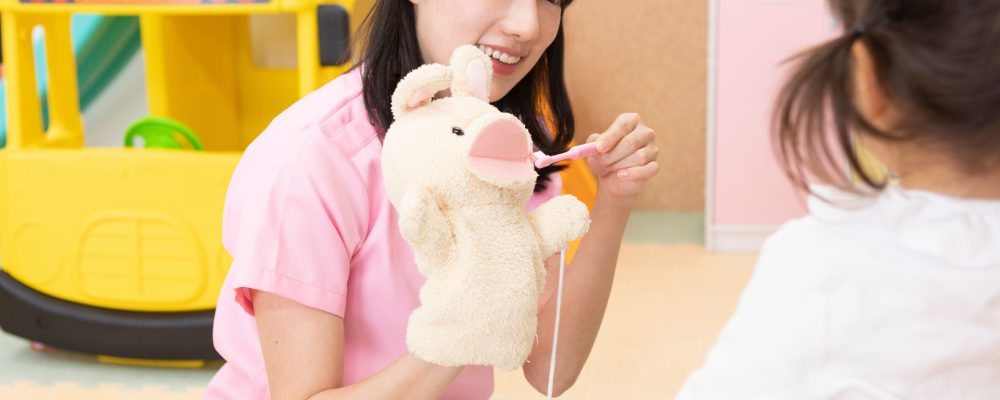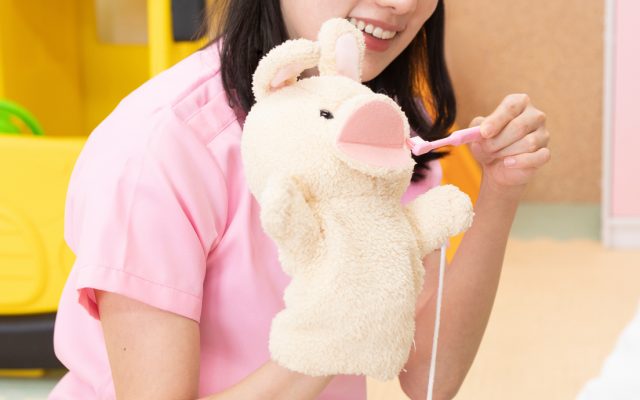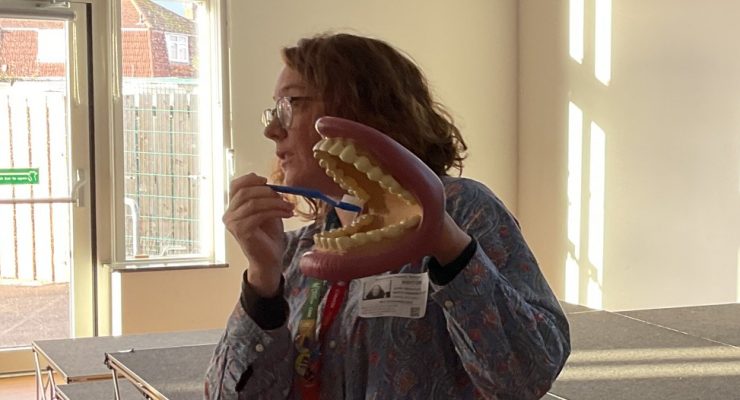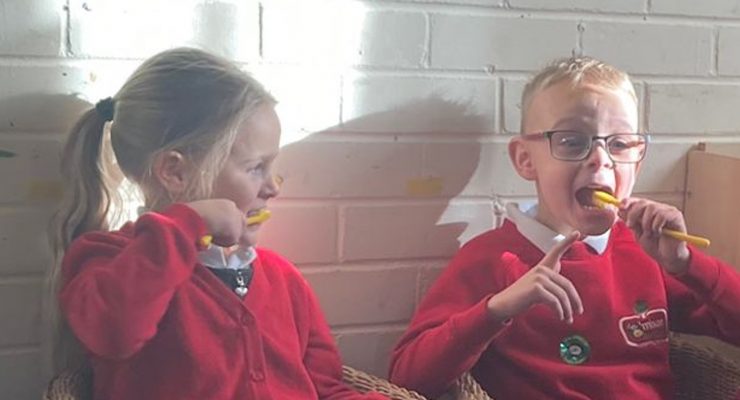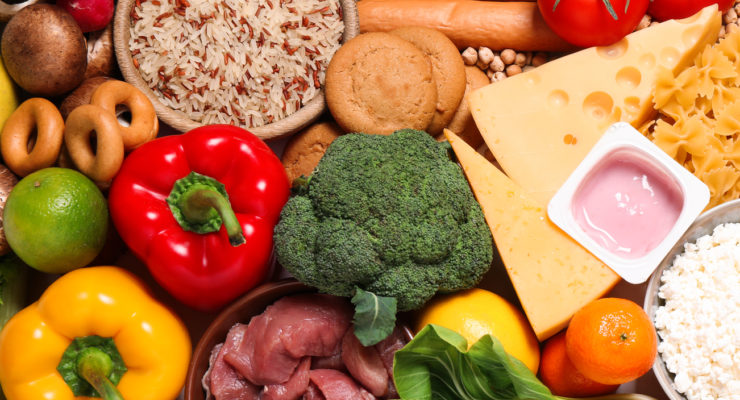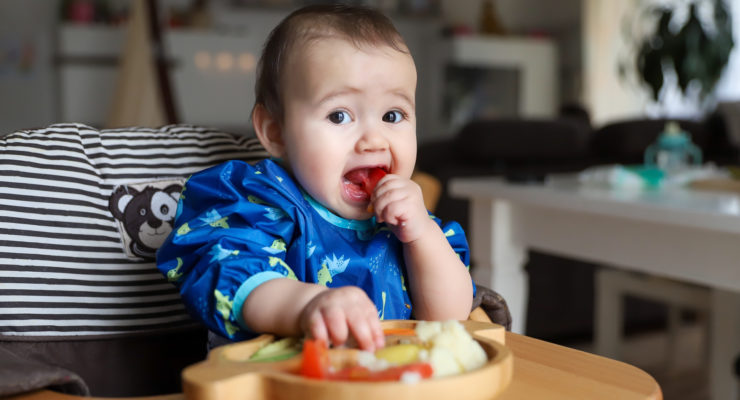Oral Public Health Specialist
North Somerset Council
Healthy and Sustainable Communities Directorate
North Somerset Council
Town Hall
Walliscote Grove Road
Weston-super-Mare
BS23 1UJ
Teeth are important for biting, chewing, smiling and talking, yet a quarter of 5 year olds in the UK have tooth decay in 3 or more teeth, by the age of 12 a third of children are too ashamed to smile, due to the level of tooth decay they are experiencing. This brings home the importance of the EYFS oral health requirement, but how do you implement it in your setting? This article aims to get you on the right track, by looking at six elements of your setting; Mealtimes, Songs and Rhymes, Books, Play and Activities, Staff Training and Parent/Carer Involvement.
For Department of Education information about oral health responsibilities, follow this link.
For Better Health’s Top Tips for Teeth leaflets and posters for parents, follow this link.
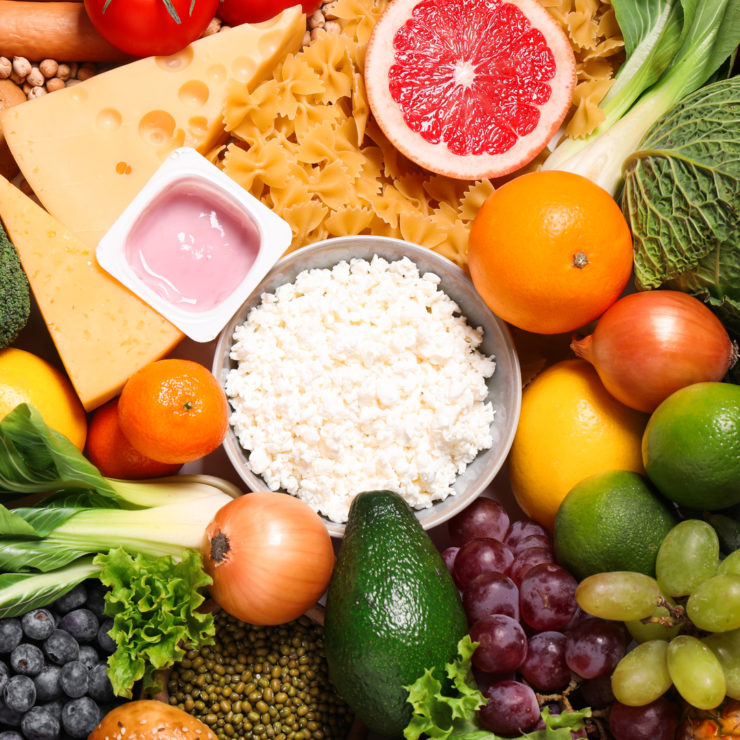
Mealtimes
A great way to instil a habit of eating food that is good for teeth, is to encourage this at mealtimes in your setting. If children bring in packed lunches, consider communicating (via a letter home or a social media post) some great ideas for balanced, low sugar, low acid lunches. The Healthier Families Campaign is full of ideas and information about this.
Follow this link to the Healthier Families lunch box guidance.
If you provide meals or snacks in the day consider if these meet the guidelines of the Eat Well guide or the Eat Better Start Better guide.
Follow this link to the Healthier Families dinner and snack guidance.
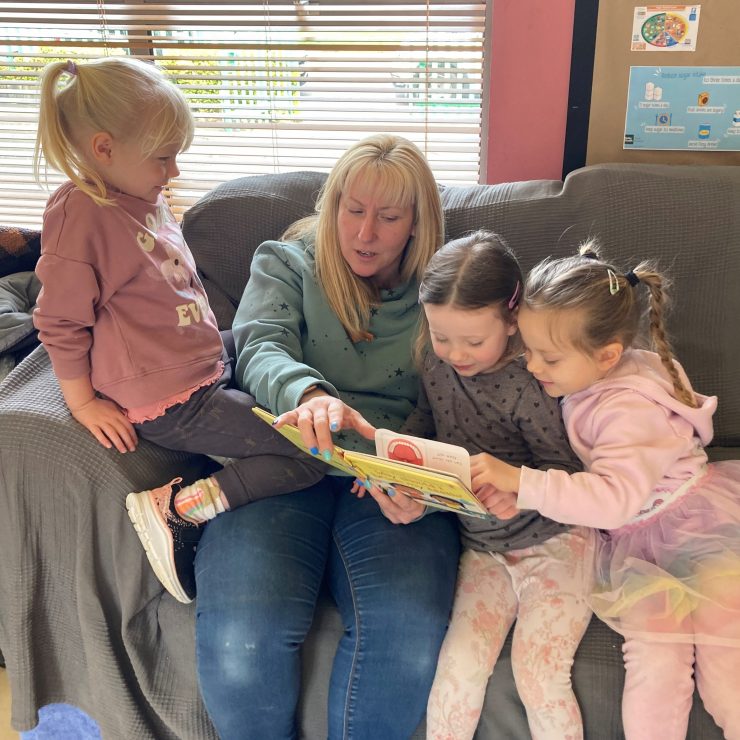
Books
Whether its one-to-one, in a group or sent home to read with the parents, consider what books are available to the children in your care. What do they teach about oral health habits and how could this be improved?
The Oral Health Foundation list educational books that you may find are supplied by your preferred stockist. You could choose two or three that cover different topics, such as brushing teeth, visiting the dentist and healthy eating.
Find the list of recommended books on their website
There are also some great story books out there that include narratives around oral health. The Oral Health Foundation list some of its favourite stories here.
Songs and Rhymes
There are a range of songs available to find online, that promote healthy habits. As a starting point, set good precedents by including tooth brushing as a verse in any songs that describe routine (for example, sing “This is the way we brush our teeth” as a verse in “Here We Go Round The Mulberry Bush”).
Activities
As play is children’s primary medium for learning, it follows that oral health habits are going to be best picked up through play opportunities. There are lots of activity ideas available on resource sharing websites, but be cautious about the activities you choose. Making a model of teeth isn’t necessarily promoting oral hygiene, so develop plans into an activity that does, for example, follow up with an activity on cleaning the teeth.
You could equip your setting with resources for learning together such as tooth brushing demonstrator puppets, or teeth models, which can be used for looking at teeth and demonstrating good brushing. These can also be used at parent events or in conversations with parents who ask for more help.
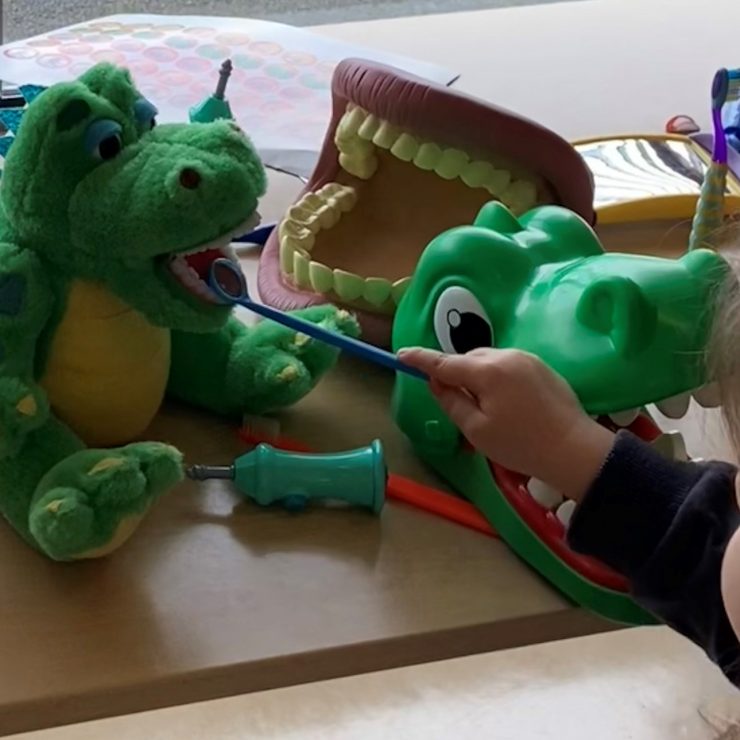
Role Play
Role play that promotes positive connections with visiting the dentist is really helpful. This could be created with things available to you, or through dental themed playsets. You could get a toy that has teeth, to place in their role play dental clinic as a patient, to discourage children from putting the play items in each others mouths (or down each others throats!).
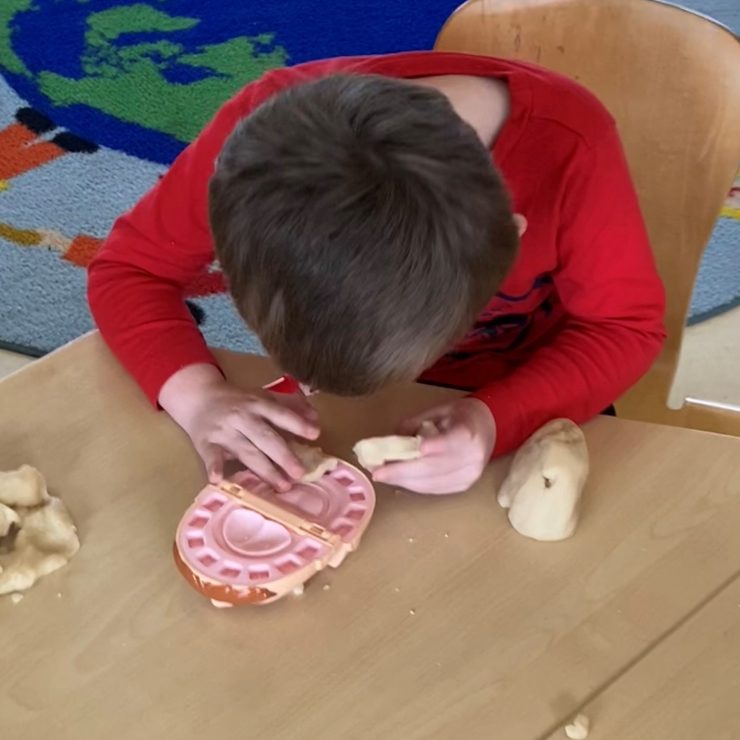
Playdough
Play activities with dough can be a great way to make learning tactile and hands on. Settings might purchase or create a dentist play dough set. These might be helpful for aiding tactile role play and hosting conversations with children around teeth and visiting the dentist.
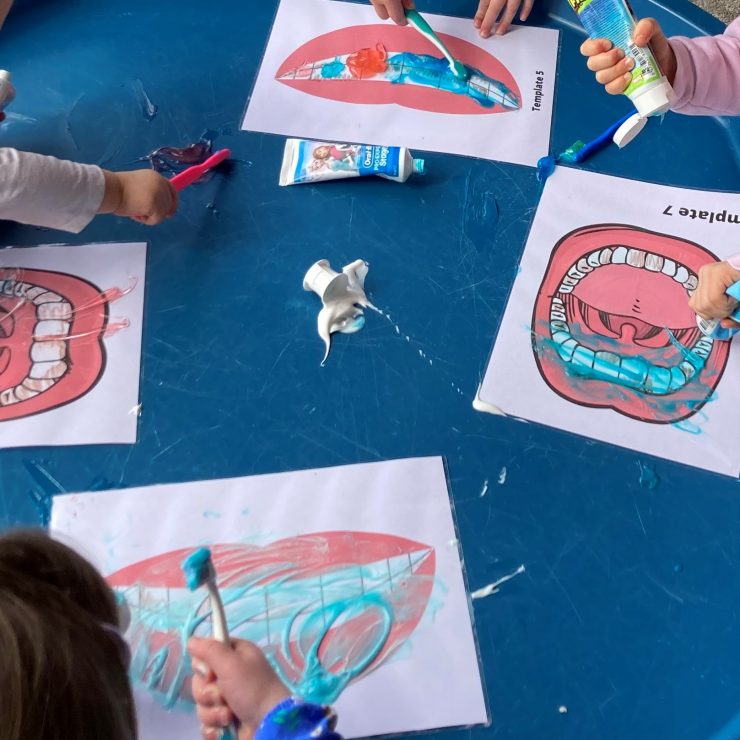
Messy Play
A simple but effective idea is print off and laminate some pictures of open mouths, and draw marks of food and plaque on them with white board markers. Place these in a builders tray with toothbrushes and toothpaste. Then support the children to clean off the marks using the brushes and paste. Encourage them to make little circles to gently clean the marks off, rather than squashing the bristles into the page. It’s messy and if you get a variety of flavoured toothpastes, smells incredible!

Sorting Game
A simple sorting game where children take food items and discuss with their group whether it is good for teeth or bad for teeth helps to wrestle with the ideas of healthy and unhealthy foods. If you’d like a more mathematical activity, you could use the food scanner app and sort packaging into an order from lowest in sugar to highest in sugar.
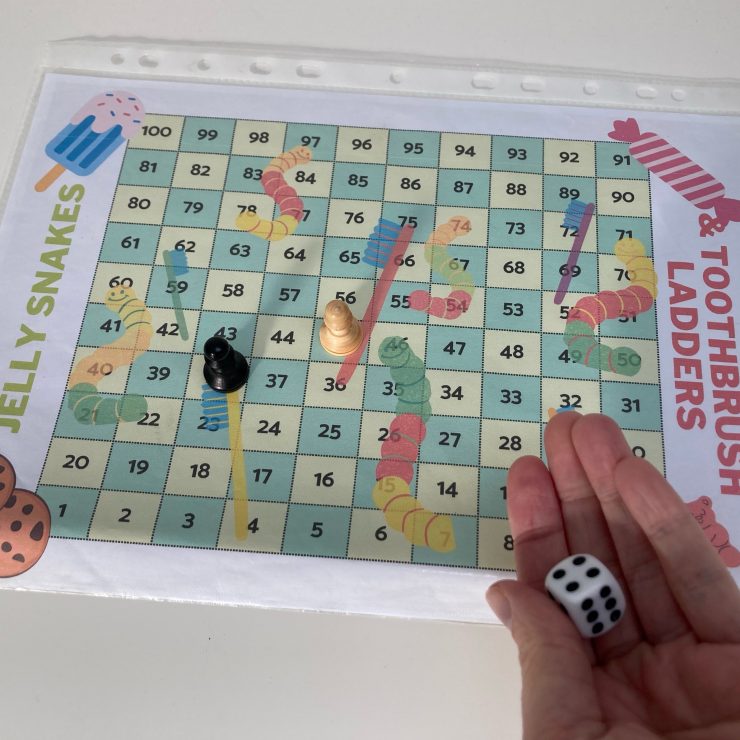
Jelly Snake and Toothbrush Ladders
A twist on the classic snakes and ladders, which promotes the oral health messages that sweets have a negative impact on your teeth whilst toothbrushing has a positive one.
The printable is available to download on this page.
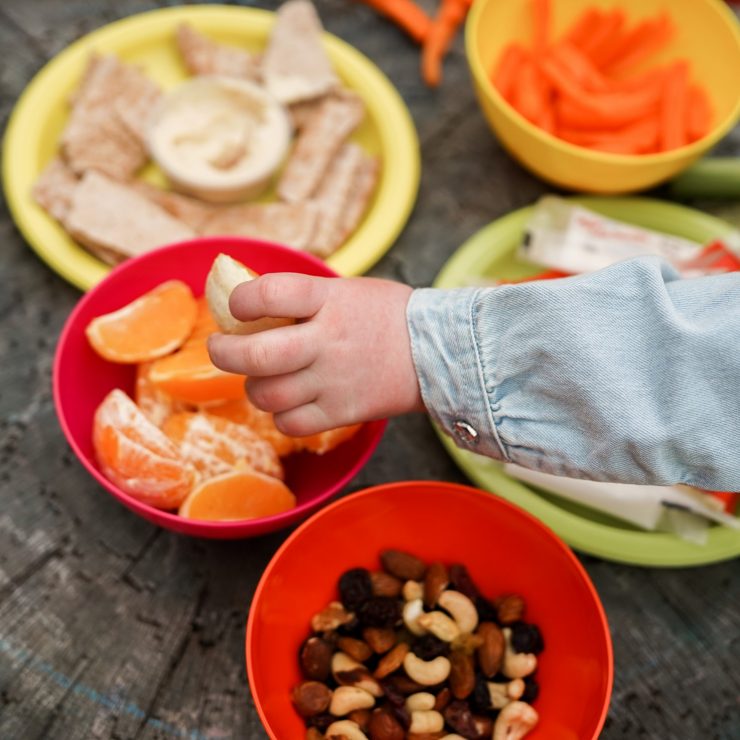
Tooth Fairy Tea Party
Why not hold your very own tea party for the tooth fairy? You could have one of the adults or a trusted visitor dress up as the tooth fairy, and invite children to bring only food that the tooth fairy would approve of, i.e. only food that is good for teeth. You could give a list of ideas to help parents both for that event and for the future.
A generic invitation is available to download on this page.
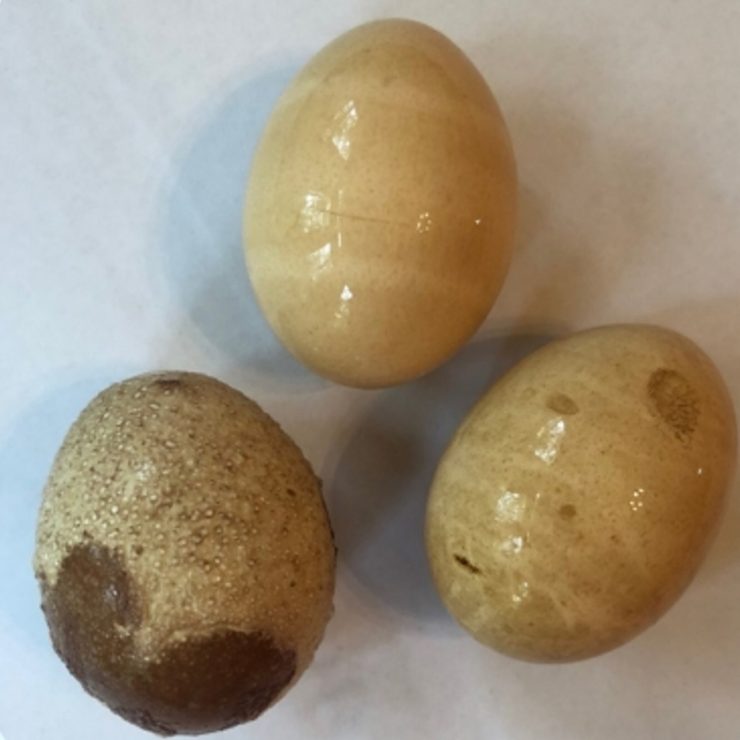
Science Experiment
As eggs are covered in an enamel like shell, they provide a useful visual exercise to show how different drinks can stain and damage our teeth.
You’ll need:
- Hard boiled eggs (as many as you’d like to use)
- A jar or plastic cup for each egg
- A different type of drink for each egg: water, milk, orange juice, cola, tea/coffee etc
- Toothpaste
For each jar choose a different drink; add enough liquid to cover the egg. To experiment with the effect of toothpaste, you could have one egg covered in toothpaste and one not for each liquid. Add an egg to each jar and leave. Check on it after a couple of hours, overnight, and after a couple of days. [If you were to include vinegar as one of your liquids the shell should complete dissolve after a couple of days (you may need to gently rub it off) and you’ll be left with a bouncy egg!] Observe the differences in the eggs. Do the stains come off when cleaned with toothpaste? Discuss how egg shells are like tooth enamel and get soft and stained with different acidic ingredients. It is important to brush our teeth with fluoride toothpaste because that makes our teeth clean and strong again.
Parent and Carer Involvement
As much as we can promote and encourage during contact time with children, it is their parents who will ultimately help them make good choices. Support parents to know what good choices look like and how to navigate life’s priorities to ensure the best outcomes for their children. Staff training will help with this as it improves confidence. There are also communication resources available to support you in getting the message home, such as the “Looking after children’s teeth” video here, which can be shared via social media.
The third module of Children’s Oral Health training (mentioned in the Staff Training section) is called “Behaviour Change Conversations” – this would give any staff member a bit more confidence to speak with parents about making a change to improve their child’s oral health.
Leaflets are available if handing out literature works in your setting. The Institute of Health Visiting have made a comprehensive handout for parents or you could order or download resources from the “Top Tips for Teeth” campaign from Public Health England.
If you have a social media following of parents, you can share about the NHS Food Scanner App using the demo video available to download here. There are resources available from Public Health England to promote healthy swaps.
Download the Food Scanner Resource Pack here
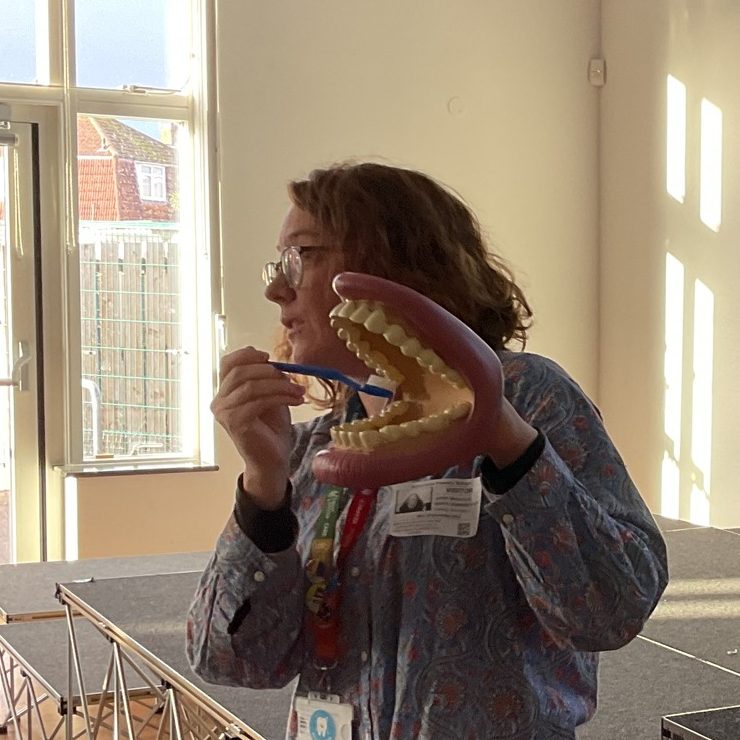
Staff Training
Keep staff up to date with the latest guidance and advice, by giving regular training. This could be through in house discussions, e-learning modules or by signing up to the North Somerset CPD course “Promoting Oral Health to Children, Young People and Families”.
For current training opportunities, follow this link.
Upon completion of training, you may find you want to draw up an oral health policy, or review the one you have. A template has been included here to help you out.

